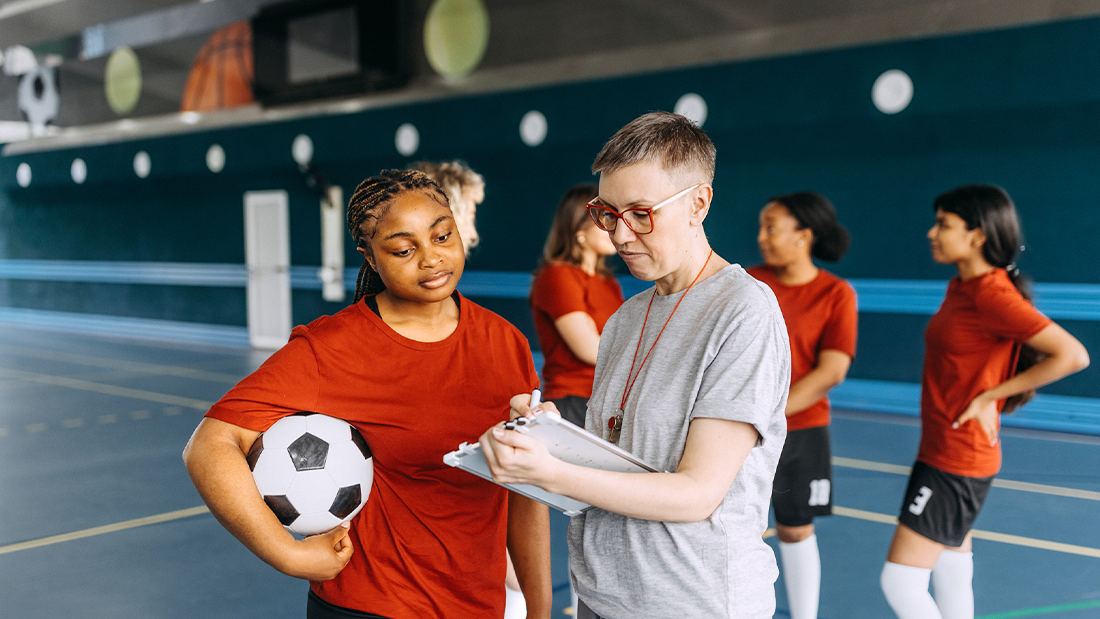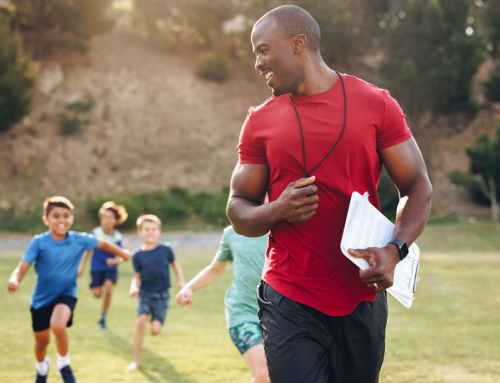
When It Comes To Bullying, Coaches Are Positioned To Protect Athletes
Coaches run practice and draw up game plans. But the job of a coach often extends beyond the pool or the court. They check in regularly to make sure every player on the team is ready to give their all. And they stay behind after the final whistle to ensure each athlete finds a safe ride home.
Some coaches even interact with athletes as a teacher in the classroom or as an administrator, athletic trainer, or community member. Because of their unique role, coaches are positioned to be aware of what’s happening on their team and with their athletes beyond the boundaries of practice. By staying aware of team dynamics wherever athletes gather—during practice and games but also on the bus traveling to an away meet or while athletes are waiting to be picked up after a scrimmage—coaches can address inappropriate behavior early.
Many kids don’t tell an adult when they’ve been bullied. It’s up to the adults around them to observe what’s happening during the time-outs and in the locker rooms. With the right tools and knowledge, coaches can play a key role in recognizing bullying and stepping in if, or when, it occurs.
Stay Aware
Team sports offer kids and adolescents an opportunity to play and grow together. But team environments aren’t always supportive or kind. There’s growing evidence that “a large number of adolescents—particularly female adolescents—struggle with bullying when it comes to sports and physical activity—both in school and within their teams.”
Coaches can reverse this trend. By being aware of the types of bullying behavior that may occur, coaches and sport leaders are better prepared to intervene early if they witness behavior that could escalate into bullying.
Bullying is repeated or severe aggressive behavior directed at someone under age 18. It can be:
- Physical: hitting, beating up, spitting at someone
- Verbal: ridiculing, name-calling, taunting someone
- Social: spreading rumors or lies about someone, socially excluding someone, using technology to harass or frighten someone (cyberbullying)
Keep in mind that addressing even the smallest instances of inappropriate behavior—like teasing or criticizing—could be a useful opportunity to have a conversation with your athletes about the importance of a respectful team environment rooted in inclusivity and belonging.

The U.S. Center for SafeSport is a nonprofit organization created to respond to and prevent sexual, physical, and emotional abuse in the U.S. Olympic and Paralympic Movement, from which it is independent. The Center also trains and educates people and organizations at all levels to support sport and recreation settings across America that protect athlete well-being.



